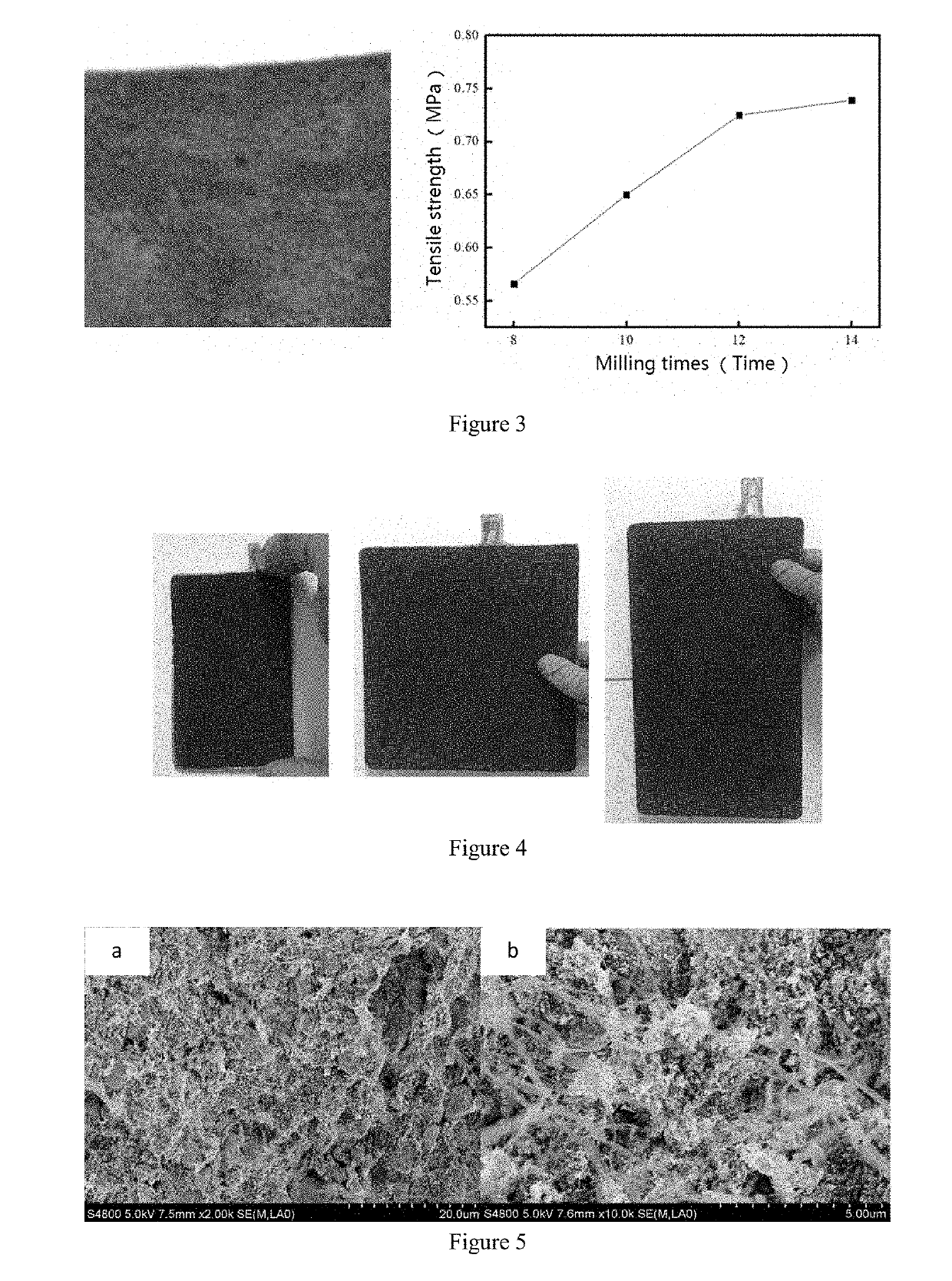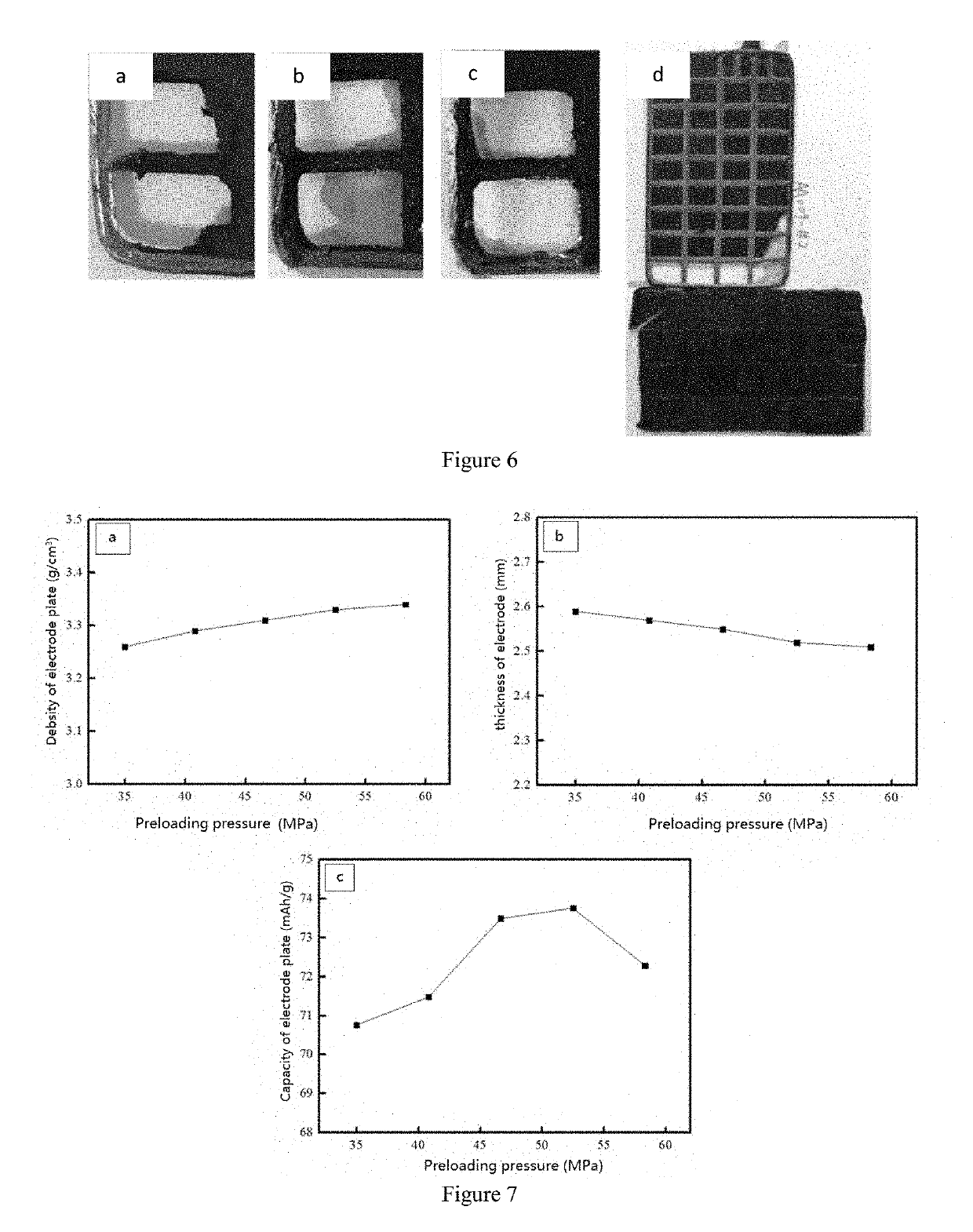Battery electrode plate preparation method
- Summary
- Abstract
- Description
- Claims
- Application Information
AI Technical Summary
Benefits of technology
Problems solved by technology
Method used
Image
Examples
embodiment 1
of the Lead-Tungsten Proton Capacitor Negative Electrode Plate
1) Formula and Raw Materials:
[0051]The raw material of the lead tungsten proton capacitor negative electrode was tungsten trioxide. The preparation method of tungsten trioxide was to use sodium tungstate as the tungsten precursor material. The sodium tungstate was dissolved in deionized water to form a uniform solution with a concentration of 5%. Then appropriate amount of hydrochloric acid was added to make the pH value of the solution 1.5. Subsequently, 5% ammonium sulfate was added to the solution to form an intermediate. The mixed solution was transferred to a reaction vessel and reacted at 160° C. for 72 hours to finally obtain a tungsten trioxide material.
[0052]Other raw materials and their weight percentages are shown in Table 1: among them, acetylene black, PTFE and EFP emulsions are commercially available. PVDF solution was prepared by dissolving 200 g of PVDF powder in 1.8 kg of N-Methyl pyrrolidone (NMP) soluti...
PUM
 Login to View More
Login to View More Abstract
Description
Claims
Application Information
 Login to View More
Login to View More - R&D
- Intellectual Property
- Life Sciences
- Materials
- Tech Scout
- Unparalleled Data Quality
- Higher Quality Content
- 60% Fewer Hallucinations
Browse by: Latest US Patents, China's latest patents, Technical Efficacy Thesaurus, Application Domain, Technology Topic, Popular Technical Reports.
© 2025 PatSnap. All rights reserved.Legal|Privacy policy|Modern Slavery Act Transparency Statement|Sitemap|About US| Contact US: help@patsnap.com



